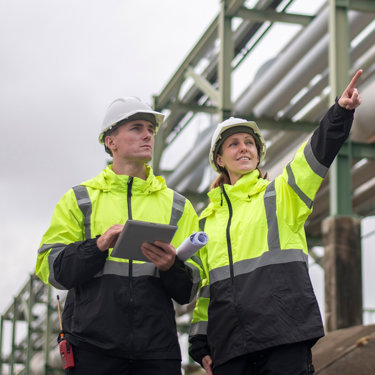Quick Guide: CIRIA C736
Published: 29 March 2023 | Download Quick Guide
This Quick Guide looks at CIRIA C736, the legal implications, why it's important to act, and what you should do to apply this good practice guidance to your organisation.
Summary
CIRIA C736 Containment systems for the prevention of pollution 2014. (Secondary, tertiary and other measures for industrial and commercial premises) is guidance for businesses to help them avoid pollution incidents and fines.
The need for more comprehensive guidance on secondary and tertiary containment systems emerged after the fire at Buncefield Oil Terminal in 2005 and the ensuing pollution events.
The guidance has a particular focus on fire, flood and spills. It should be read and implemented by anyone who may have a risk of a containment system failing and causing a pollution event. This advice, if correctly followed, is aimed at preventing another incident like the Buncefield event.
From sites with just one tank, to large chemical sites with multiple storage units, CIRIA C736 sets out clear advice on the implementation of a detailed risk assessment and classification system for containment systems, and how secondary and tertiary containment systems should be planned, designed, and built.
It also focuses on the various containment systems, the necessary upgrades that are required to some, and, most importantly, the ongoing maintenance that is essential to ensure a compliant site.
The legal perspective
There is a range of UK legislation that provides the legal viewpoint on containment, including:
- The Environmental Permitting (England and Wales) Regulations 2016, and The Pollution Prevention and Control (Scotland) Regulations 2012
- The Control of Pollution (Oil Storage) (England) Regulations 2001, The Water Resources (Control of Pollution) (Oil Storage) (Wales) Regulations 2016, The Water Environment (Oil Storage) (Scotland) Regulations 2006, and The Control of Pollution (Oil Storage) Regulations (Northern Ireland) 2010
- Pollution Prevention and Control Act 1999
- Control of Major Accident and Hazards (COMAH) Regulations 2015
The relevant legislation is then supported by standards and good practice guidance (such as CIRIA C736) to help businesses interpret the law and comply with it. This will include ensuring the correct procedures for containment and ongoing maintenance are established.
Businesses must comply with the appropriate legislation. Adoption of recognised standards like CIRIA C736 will enable operators to demonstrate they are doing everything reasonably practicable to reduce risk in relation to pollution spills.
Should an unfortunate spillage occur, then the regulators will be looking at where legislation hasn’t been followed – but will also be examining if good practice guidance has been implemented to aid in a safe and secure operation.
Why you must act
Following the good practice set out in CIRIA C736 helps companies to massively reduce the pollution risks associated with their operations. In addition, there are other elements that can be avoided with adoption of the guidance.
Penalties and reputational issues
Containment units that are incorrectly planned or built, or not regularly maintained, can result in pollutants escaping and causing environmental harm. This damages the local ecosystem, but the effects of ineffective secondary and tertiary containment systems can have a far greater impact on the business concerned.
Huge fines have been imposed on companies that have experienced a pollution event, and these fines have significantly increased where they haven’t applied the guidance set out in CIRIA C736.
As well as the operational impact of downtime to ensure clean-up of the pollution and the financial impact of fines, there is also a negative effect on the company’s reputation. While businesses endeavour to improve their reputation and their image of being a safe operator, both are significantly impacted when they experience a pollution event.
Practical application
The main focus of anyone planning to implement the guidance in CIRIA C736 should be the correct design and construction of secondary and tertiary containments. Companies can protect themselves against future liabilities by providing high-integrity containment systems for materials known to endanger and pollute the environment.
Ensuring these containments are regularly checked and maintained is essential in proving to the regulatory bodies that you have done all that is practicable to reduce risk and consequences from primary storage containment failure.
An environmental partner can guide you through this process, ensure records are maintained and stored, and provide remedial works to containments if required.
What you should do
- Ensure all secondary and tertiary containment systems are correctly specified.
- Ensure all secondary and tertiary containment systems are subject to an appropriate inspection regime, including routine and periodic detailed inspection in line with the relevant standard and good practice guidance.
- Ensure that any defects and non-conformances are addressed as soon as practicable, or develop an appropriate improvement plan.
- Work with an environmental partner who can guide you through the required inspection and maintenance regimes to ensure your sites remain compliant.
You can find all our Quick Guide downloads here.
Environmental compliance today, creating a sustainable tomorrow
Helping you reduce risk to the environment and your operation by managing assets compliantly while achieving commercial, ESG, and net-zero goals.
Contact our experts
